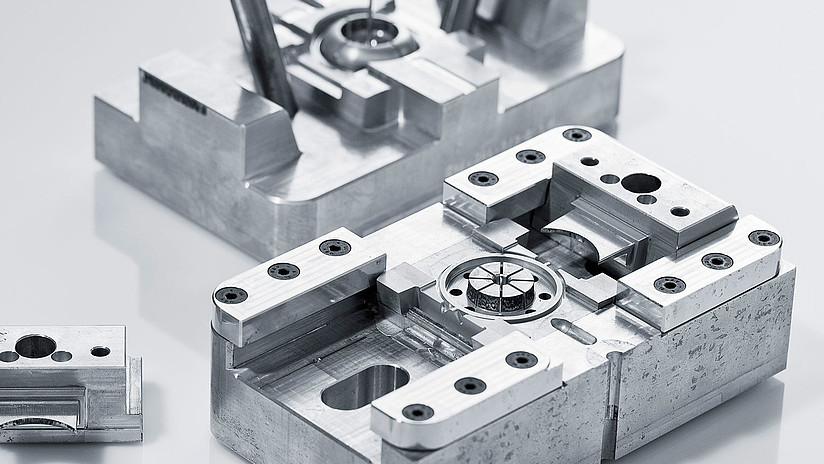Introduction
A. Definition of Mold Design
Plastic mold design is creating a model design for manufacturing an object or component. A mold is typically made from metal or plastic and acts as a container that shapes and forms materials into desired shapes or sizes.
Mold design begins by selecting the material and shape of the mold, as well as its size, capacity, and other specifications. Additionally, considerations like temperature requirements during manufacturing, material type used, and desired properties of the final product must be considered during this step.

B. Importance of Mold Design Considerations
Mold design is essential for the success of any manufacturing process that involves mold production. A well-designed mold can improve product quality, lower production costs, and boost production efficiency. Mold design considerations encompass material selection, mold size, and shape, cooling and heating systems, gate/runner design, and ejection mechanisms. These considerations guarantee the mold is optimized for specific production demands and that the final product meets quality requirements. Inefficient mold design can lead to product defects, extended production times, and increased costs; thus, you should pay close attention to mold design considerations when deciding.
C. Overview of Mold Design Considerations
Mold design considerations are essential to guaranteeing quality parts every time. Factors like material selection, gating, venting, cooling, and parting line design all play an integral role in designing an efficient mold. Material selection must match the part’s intended use while gating and venting enable molten material to fill the cavity accurately. Cooling design helps guarantee uniform cooling, which reduces cycle time, while parting line design ensures parts separate efficiently without damage to them. Other elements to consider are ejection, slide/lifters, and mold maintenance.

II. Part Design Considerations
A. Wall Thickness
The wall thickness of a part is essential in ensuring its structural integrity. A suitable thickness should be consistent across the part, giving it sufficient strength and rigidity while avoiding problems such as warping or sink marks.
B. Draft Angle
Draft angles refer to the degree of taper added to a part’s design, which allows it to eject from the mold quickly. A draft angle helps protect surfaces during ejection and minimizes mold damage during removal.
C. Undercuts
Undercuts are any features on a part that prevent it from being ejected from the mold. Designing around undercuts can be tricky, as they typically involve using side actions, lifters or slides to take it out. Designers must consider any undercuts when crafting their part design to not hinder this important step in the ejection process.
D. Ribs and Bosses
Design elements such as ribs and bosses can improve a part’s strength and stiffness using minimal material usage. Ribs are thin sections added to the part surface, while bosses provide locations for screws, threaded inserts, or other fasteners. When selecting these components for your part design, it is important to consider potential issues like sink marks or deformation of the parts.
E. Gate and Runner Design
Gate and runner design are essential components of mold design, significantly affecting its effectiveness, cost, and final product quality. The gate is the entry point for Plastic Injection Molding into the mold cavity where the runner connects it. Poorly designed gates or runners can lead to filling imbalances, air entrapment, and defects in the final product, negatively affecting part quality. Optimizing gate and runner design in mold design can reduce cycle time, minimize material wastage, and simplify the design while increasing production efficiency. Gate and runner complexity can affect manufacturing time and cost, while difficult-to-maintain designs may cause downtime and production losses. Therefore, it’s essential that designers carefully consider gate and runner designs when crafting their mold designs.
III. Conclusion
A. Recap of Mold Design Considerations
Mold design involves numerous vital factors that must be carefully assessed to guarantee an economical, efficient, high-quality production process. These factors include part design features such as wall thickness, draft angle, undercuts, ribs, and bosses. Furthermore, gate and runner designs have the potential to significantly affect product quality, production costs, and efficiency. Suboptimal gate or runner design can cause filling imbalances, air entrapment, and part defects that negatively affect product quality. Optimizing this design element helps reduce material wastage, cycle time, maintenance costs, and mold complexity while improving production efficiency. Thus, it is essential to consider these factors when crafting a mold design to produce high-quality products efficiently and cost-effectively.
B. Importance of Mold Design Considerations in Product Quality and Cost
Mold design is crucial in determining the final product’s quality and cost. Poor mold designs can result in defects, decreased production efficiency, and higher mold manufacturing expenses. An accurate evaluation of wall thickness, draft angle, undercuts, ribs, bosses, gates, and runners is essential when creating a mold design that produces high-quality products efficiently and cost-effectively. Manufacturers can reduce material waste, cycle time, maintenance expenses, and mold complexity by optimizing mold design while improving production efficiency and quality. Doing so will result in cost savings and superior end products. Thus, prioritizing mold design considerations is essential to guarantee cost-effective yet high-quality production.
C. Future of Mold Design Considerations.
Mold design will continue to evolve with cutting-edge technologies such as computer-aided design (CAD) and simulation programs. These tools enable mold designers to optimize design parameters, reduce the cost of mold manufacturing, and enhance production efficiency and product quality. Rapid prototyping techniques such as 3D printing will remain essential in mold design, enabling designers to rapidly create and test molds before mass production begins. Computer Numerical Control (CNC) machining is a viable alternative to traditional metal molds, providing high-temperature and wear-resistance products. Manufacturers will experience more efficient and cost-effective production processes by integrating advanced technologies into mold design considerations.
Loading recommendations...


The guide of Mold Design Considerations’ provides invaluable insights into this complex field, offering a comprehensive overview of key factors to consider when designing molds for various applications. Empower yourself with the knowledge and skills needed to excel in mold design and manufacturing. Visit http://zoome-australia.com/ today to unlock a world of educational opportunities and take your expertise to new heights.
Crafting software involves the development of software applications and services. Professionals in software development transform ideas and visions into tangible software pieces, delivering them to clients through – https://www.visartech.com/blog/custom-ml-and-ai-development-with-azure-ai/
Software development professionals https://chisw.com/ take ideas and visions and turn them into tangible pieces of software, which are then delivered to clients.
I would also like to tell you about a website that provides a lot of useful information on how to create a modern betting site. You can find more https://limeup.io/blog/how-to-create-a-betting-website/ here on the site, now it is very important to develop and learn the latest news about the world of design and development as it is our future.
Instagram is a social networking site where people can upload their photos and videos, follow other users and create accounts. This site instagram anonymous can help you to view Instagram without any problems. It is a powerful solution to all Insta lovers.
Software development is a craft that involves the creation of software applications and services. Software development professionals https://chisw.com/ take ideas and visions and turn them into tangible pieces of software, which are then delivered to clients.